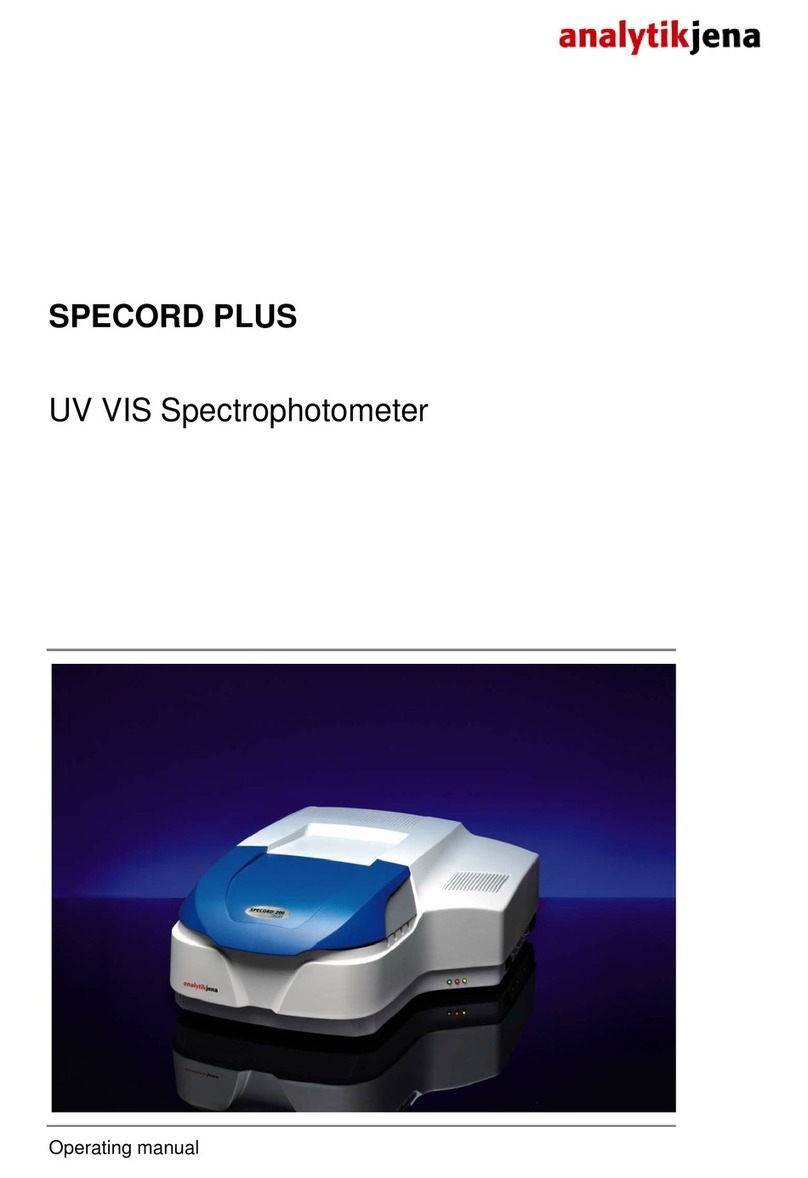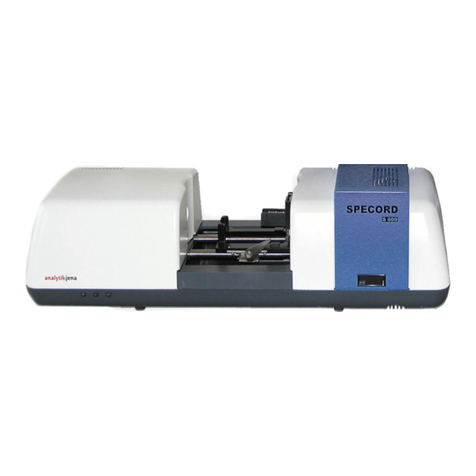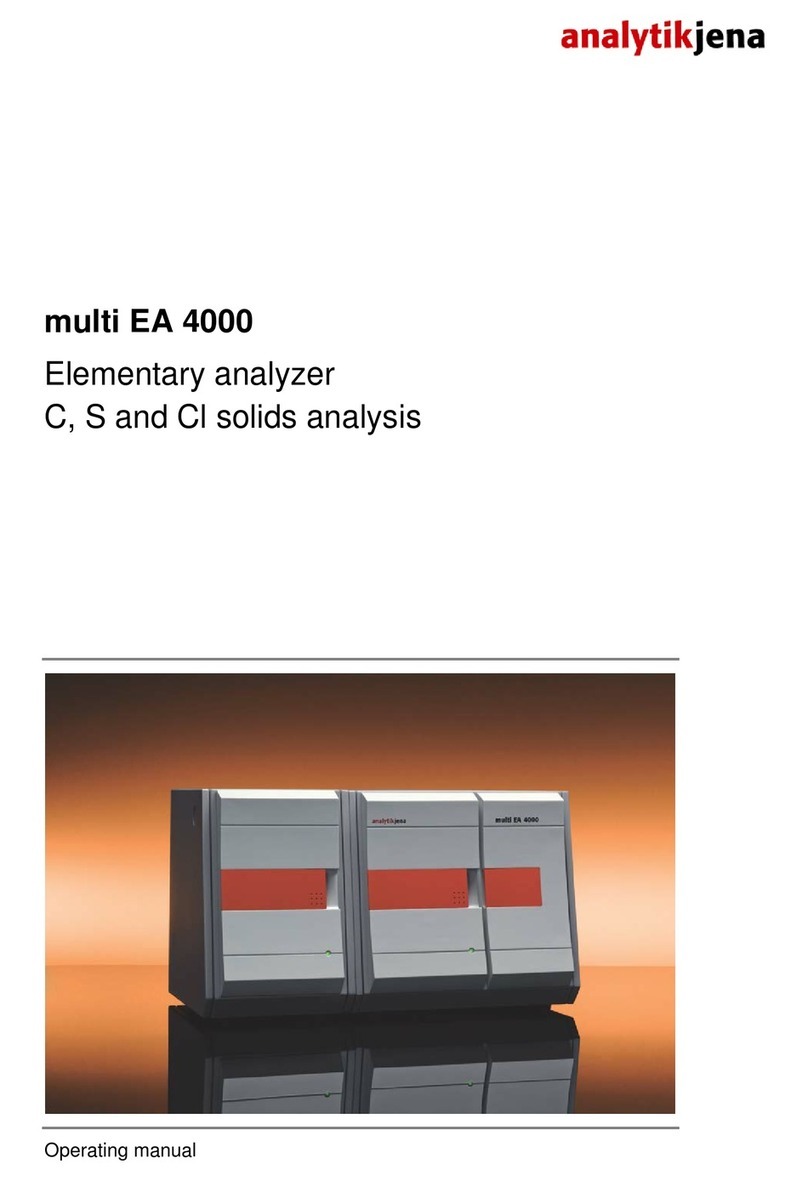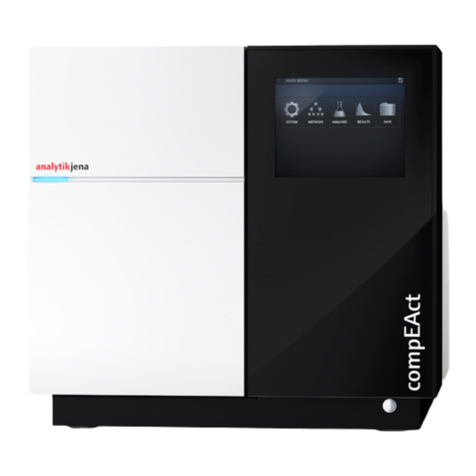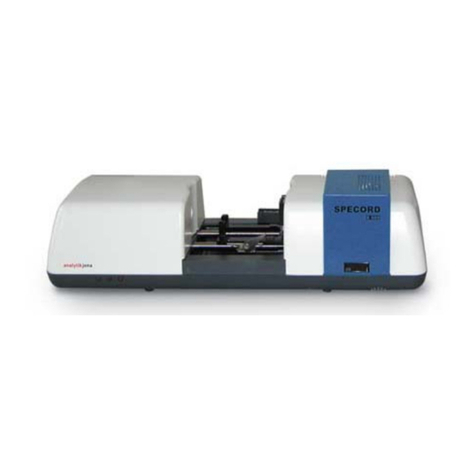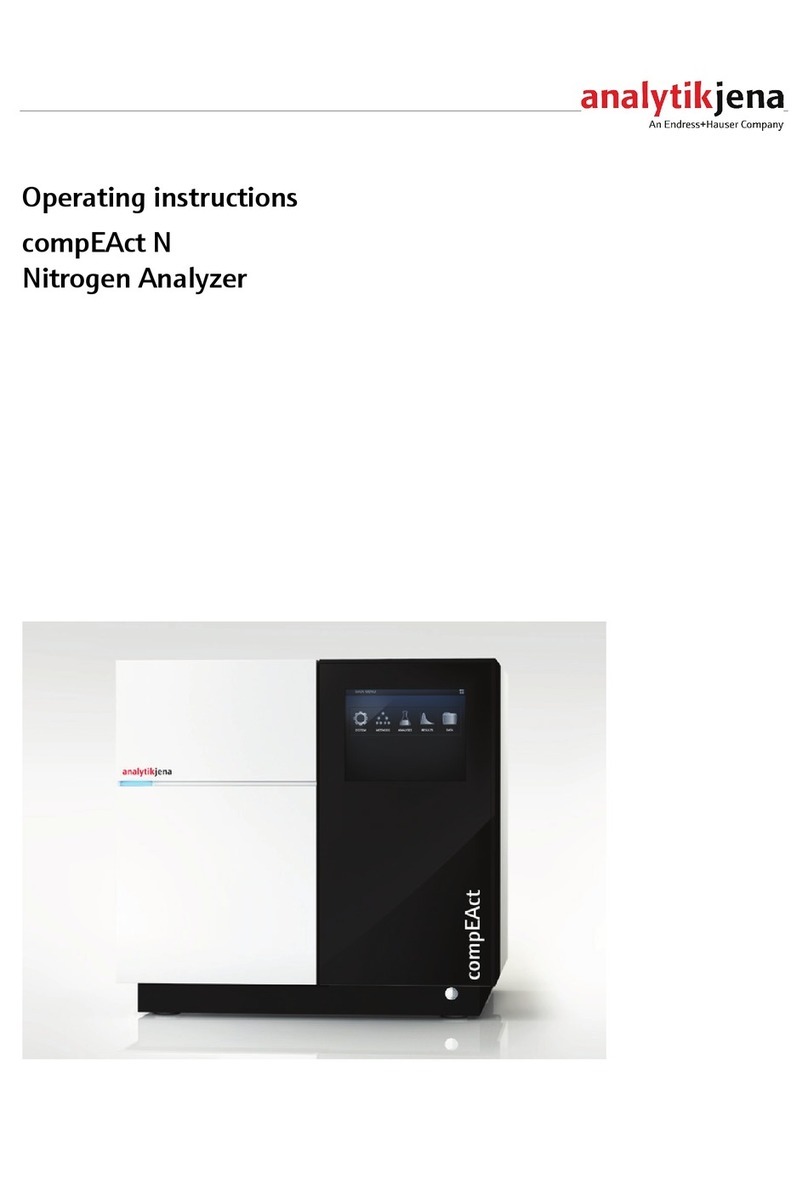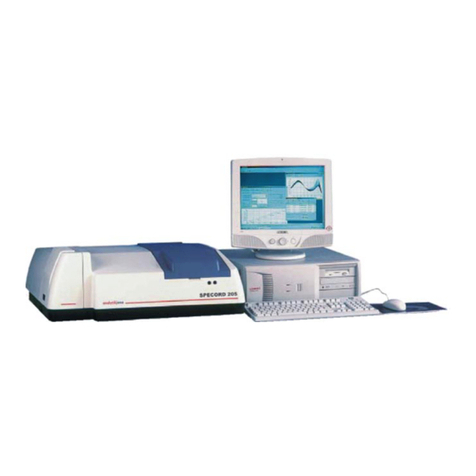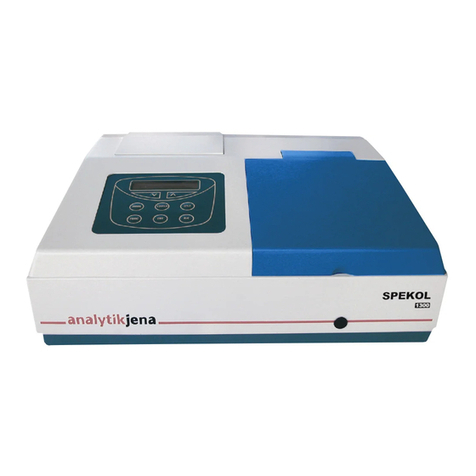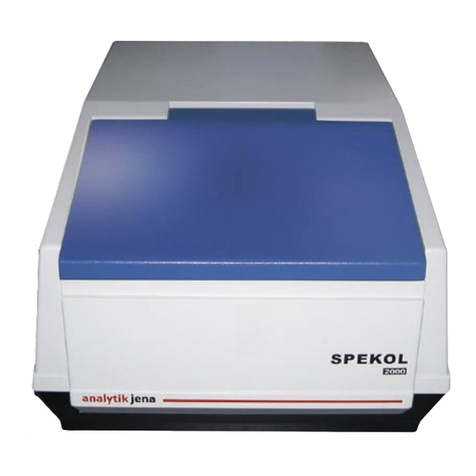
Contents
Contents
1Introduction .....................................................................3
1.1 Intended use of the SPECORD S600 ...................................................3
1.2 Notes on the User's Manual..................................................................3
2Safety notes .....................................................................5
2.1 Warning labels on SPECORD S600 .....................................................5
2.2 General safety regulations ....................................................................5
3Technical Data of SPECORD S600.................................9
3.1 Physical-optical data .............................................................................9
3.2 General technical data ........................................................................10
4Device description and operating principle ................11
4.1 Mechanical design ..............................................................................11
4.2 Operating principle ..............................................................................12
5Transport and installation requirements.....................15
5.1 Conditions for storage and transport...................................................15
5.2 Installation conditions..........................................................................15
6Installation and start-up................................................17
6.1 Connectors and display elements.......................................................17
6.2 Connecting the SPECORD S600........................................................18
6.3 Start-up................................................................................................18
6.4 Switching off the SPECORD S600 .....................................................20
7Accessories ...................................................................21
7.1 Standard cell holders ..........................................................................21
7.1.1 Universal holder .............................................................................................21
7.1.2 Cell holder ......................................................................................................22
7.2 Further accessories.............................................................................23
8Care, maintenance, lamp change.................................25
8.1 Care and maintenance........................................................................25
8.2 Cleaning ..............................................................................................25
8.3 Changing lamps ..................................................................................26
8.3.1 Part numbers of lamps ...................................................................................26
8.3.2 Note on the service life of lamps ....................................................................26
8.3.3 Opening the flap of the lamp compartment ....................................................26
8.3.4 Changing the deuterium lamp ........................................................................27
8.3.5 Changing the halogen lamp ...........................................................................28
8.4 Changing fuses ...................................................................................29
9Disposal .........................................................................31
10 List of illustrations ........................................................33
SPECORD®S600 Issue 02/2008 1
Analytik Jena AG
